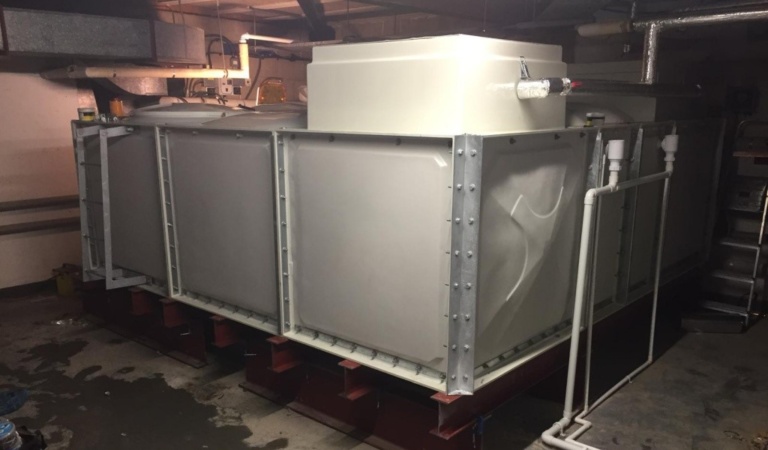 10th June 2022
10th June 2022What Type of Plastic Are Water Tanks Made From?
There’s many different materials that water tanks are made from, each being strong and protective in their own right. The most common water tanks are made from steel, concrete, and plastic.
Domestic water tanks are used to store water for a number of reasons. It could be for drinking, heating, sanitary use, or storing harvested rainwater.
So if water starts leaking out or escapes through cracks, that’s a problem. Not only because it depletes the amount of water there but because it can lead to contamination of the water itself. Therefore, water tanks need to be strong and robust. They need to be able to protect the contents from damage, leaks, and contamination.
Plastics Used to Make Plastic Water Tanks
Plastic tanks have grown in popularity recently thanks to their low cost and high flexibility. They are often classified according to the type of polymer that was used to manufacture them. All plastic tanks are manufactured with polymer materials, the three common polymers used are: polyethylene, polypropylene, and fibreglass.
Polyethylene Plastic Tanks
Polyethylene is a high quality thermoplastic that is incredibly resistant to weathering, abrasion, and chemicals. And the durability of polyethylene makes it great in the production of plastic tanks. If they’re being used as an outdoor tank, an ultraviolet light stabiliser is added as a coat to offer extra protection against the sun.
Cross-linked polyethylene is high density, which is resistant to impact and fractures, as well as having an increased tensile strength. This is because a catalyst is added to the thermoplastic resin in order to turn it into a thermoset.
Linear polyethylene is not only low and medium density but also high density, too. For polyethylene tanks, the majority are made from LMDPE (linear medium density polyethylene) or LHDPE (linear high density polyethylene). These forms have immense strength and are resistance to harsh environmental conditions.
Polypropylene Plastic Tanks
Another form of thermoplastic is polypropylene. Made from a combination of propylene monomers, it has low density making it lighter than other plastic materials. Often times, it is copolymerised with other polymers like polyethylene, hence the ‘poly’ of polypropylene, to increase the strength.
Polypropylene is ideal for use as a storage tank due to its chemical resistance, elasticity, toughness, and fatigue resistance (wear and tear).
As polypropylene has an ability to adapt to different fabrication processes, it is very widely used within the water tank industry. Polypropylene has been used to store reactive elements thanks to its high chemical and corrosion resistance and rigidity.
Fibreglass Plastic Tanks
Fibreglass storage tanks are used in applications both above and underground. They are durable, corrosion resistant, and do not deteriorate. As fibreglass is impermeable, it does not need waterproofing.
It is also easier to relocate, install, and transport because fibreglass is much lighter than any other tank material.
In fact, you’re probably already familiar with fibreglass water tanks. They are also commonly referred to as GRP tanks – glass-reinforced plastic or glass-reinforced polymer. GRP water tanks are fibreglass.
Get in Touch: Cold Water Storage
Here at Cold Water Storage, we have 30 years of experience and knowledge in the water industry. If you want to know more about our services then don’t hesitate to contact us! Our team will be happy to help you with whatever enquiries you have.
If you need any installations, repairs, relines or replacements on your cold water storage tank, we’ve got you covered. We won’t give you nothing but the best in order to fix and protect your water tank.
Give us a call on 01943 872 311 or send an email to info@coldwaterstorage.co.uk. We’ll get back to you as soon as possible.